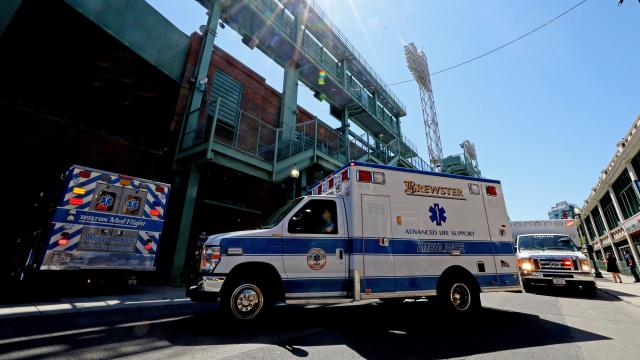A new study out Monday seems to confirm anecdotal reports from health care workers: Emergency rooms across the U.S. saw a massive decline in visits in March and April, possibly because people feared contracting covid-19 if they sought medical care.
The study, published in JAMA Internal Medicine, was an examination of daily emergency department visits as well as hospitalisations that went through the emergency department from January to April of this year. Data from more than 20 emergency rooms in five states — Colorado, Connecticut, Massachusetts, New York, and North Carolina — was included in the study.
The authors found that there was a clear decline in daily ER visits starting in March across all five states, relative to the months before. At the same time, there was an uptick in people who visited the ER and were then admitted for hospitalisation. Between states, though, there were differences.
In New York, for instance, the studied ERs reported a 63.5 per cent decrease in total visits through March and April, while Colorado ERs reported a 41.5 per cent decline (the smallest decline of the five states). New York also experienced a 149 per cent increase in hospitalisations through the ER during this period, while North Carolina experienced a 22 per cent jump in hospitalisations (the lowest increase of the five states).
The decline in ER visits, the authors concluded, suggests that policies intended to promote social distancing between people may have been interpreted too strongly by the general public.
“This is a case where public messaging appears to have worked too well,” lead author Edward Melnick, associate professor of emergency medicine at Yale University, said in a statement released by the university. “We said, ‘stay home,’ and what people heard was: ‘Stay home at all costs to avoid COVID-19.’”
The other findings by the team — that hospitalisations through the ER began increasing in March and April — do suggest that covid-19 made many people seriously sick during these early days. Importantly, the authors noted, admissions only began rising after locally reported cases of covid-19 began increasing as well. And New York’s much higher increase in hospitalisations relative to other states likely reflects the much larger outbreak the state was facing during that time (New York’s reported death toll of over 30,000 remains much greater than any other state’s so far).
But though it’s true that some hospitals in areas hard hit by the pandemic continue to experience difficulties in securing enough resources to manage all their patients, hospitals in general do seem to have been able to cope during this time. According to Melnick, people shouldn’t be afraid to visit the ER if they feel they need emergency care, whether covid-19 rates are high in the area or not.
“Our new rallying cry is that hospitals are safe,” Melnick said. “Few hospitals outside of New York approached going over capacity during March and April 2020. That means a lot of people suffering from non-COVID illnesses and injuries may have stayed home and unnecessarily suffered or even died because they were too scared to come in.”
